Animated Works: Ability to Induce Strong Emotions
All of us are acquainted with animated works of most kinds such as an animated film from a prestigious studio like Pixar or Dreamworks, an animated TV show, or a modern first-person shooter game. One thing we all can agree on is that animated works are exceptionally powerful at delivering emotions and are often more likable than their live-action counterparts.

What gives them this magical appeal? In this article, various popular animated works will be analyzed, and it will be discussed how these works manage to stimulate more emotion in us than most live-action films and TV shows.
Ability of Technology
Although there are many software for animation, the animation giants are not confined to tailor-made software, which are mostly incompatible and cannot be customized for specific needs. Rather, they have a storehouse of personal software used for designing, programming, rendering, and affecting specific parts of an animated work. For example, Disney used a tool called Matterhorn to design all the snow for the film Frozen that incorporates mesh working with grid manipulation schemes. Similarly, a lot of software are created for various purposes in their films.
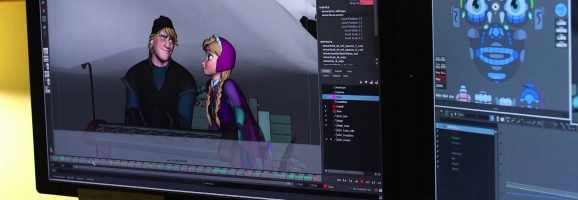
The following paragraph is taken from a post by Amanda on The Technology Behind the Magic blog.
Elsa undergoes an entire hairstyle transformation right on-screen, a concept that was pretty much unfathomable until recent years. The software used to make this possible is called Tonic, and it was developed for use in this film. Tonic allows artists to sculpt and animate a character’s hair in volumes, then during rendering it can be broken down into individual strands. If that doesn’t sound complicated enough, Elsa’s hair has a total of 400,000 individual CG strands while Rapunzel’s hair has a grand total of 140,000.
Just a couple decades ago, imparting motion to a girl’s long hair or designing a dancing scene with beautiful steps couldn’t be imagined. Things were limited to hand-drawn artistic skills and coarse computer-based movement and transition frameworks.
Today, splendid and truly magical feats can be achieved with animation. This ability of technology sets the stage for the animated works to induce strong emotions.
As much as animators have to do individually in making the art, polygons, meshes, grids, tubes, and motion snippets, a large quantity of motion data is manipulated and handled by software placed on highly capable computers.
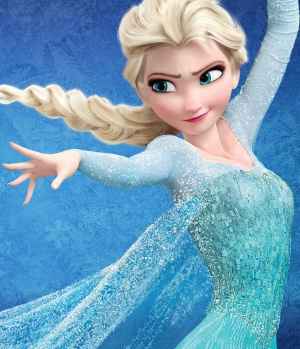
Today, animation companies have designed software equipped with fast algorithms that can apply a filter of luster or brilliance on a surface like a dress tightly worn by a character. Even in image editing, such filters are not difficult to find. Photoshop, a bitmap editor, and Inkscape, a vector editor, both have a set of predefined filters that do various things without the need to manually do it.
For example, a filter would be the Ink Bleed of Inkscape. It can be broken down into simple SVG commands of manipulating an object. When we do it with a filter (when it’s pre-coded to do something) and not manually, it seems magical and takes less time.
Same happens in animation, though the filters used are private to the companies and pretty complicated.
So, such a filter would automatically take care of the curves, bulges, and bumps of the texture and calculate the amount of shine to place at each atomic point (usually defined by polygon structures). Of course, it still took time and minds of innumerable people to create such a filter.
Such technological advancements lead up to the beauty of animation. Live-action cannot achieve many effects that an animated work can, which is discussed in the second next section exclusively. Therefore, the magic of animated works stems from such capabilities that have been mastered through software and computers over time. If the technology was worse, we would be getting lesser emotional attachments, if it was better than today, we would be getting better experience of all emotions like sorrow, joy, and fun.
Lack of Live Actors
The lack of live actors in animated works steals some amount of fanfare from the work. Sometimes, producers try to compensate by bringing popular voices, if not faces, through voice acting for characters, but nevertheless, the lack of a known face performing on-screen dents the commerce of the work.
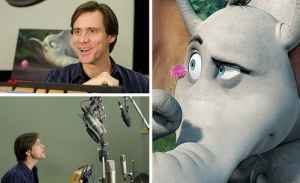
Some works that have a popular personality, like a Disney princess or a Marvel superhero, don’t face this syndrome.
However, it’s disputed whether bringing in star actors for voice acting is a good practice. It robs the talented and versatile voice actors who lose considerably when top voice spots are filled in by stars. It can also distract audience because the image of a character is established uniquely with a suitable voice, not from the voice of somebody you know is completely different. Arguing this is out of the scope of this article, so a good discussion for further details, which is also the idea behind this paragraph here, is Do Animated Movies Really Need Big Name Voice Actors? on Film Junk.
Besides actors, in animated works, there’s a lack of many real-world objects to which everybody has grown so familiar. But finally, the overall feel has a lot of emotion and truism, which makes up for the lack of reality.
It’s not clear whether the lack of popular faces is inversely proportional to the commercial success of the work. Sometimes, star-studded films can make less money than a heavy-budget animated film with no mention of a Hollywood star. Although it’s not the point of this post to discuss the pros and cons of voice acting in animated works, the negative impact could be seen in Jay Baruchel’s voice acting for the How to Train Your Dragon protagonist Hiccup. The steady depreciation of voice artists in animation is covered strongly in an article on About Entertainment that states, among other nice things,
Jay Baruchel’s performance as How to Train Your Dragon‘s protagonist, Hiccup, strikes all the wrong notes virtually from start to finish, as the actor finds himself unable to shed his rather distinctive persona – which effectively ensures that he’s never quite able to wholeheartedly become his character to any degree of success (which basically means that we’re always aware that we’re listening to Baruchel).
Malleability of Animation Over Live-Action
Any animation starts from a lump of virtual clay. From there, it can be made into anything. This inherent quality of computer animation makes way for exaggeration in animated works. As a result, an astounding number of reactions, behaviors, and atmospheres are completely specific to animated works, providing them an edge over live-action works.
The extreme flexibility it grants cannot be questioned, as becomes clear time and again in animated fight scenes, specifically with superpowers, and funny moments that common physics doesn’t allow for. A splendid example would be the lovable supervillain, Megamind, from the film Megamind.
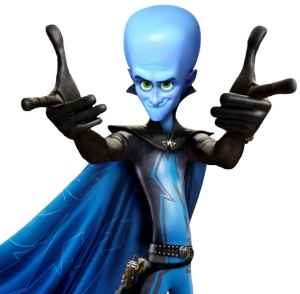
A lot could be brought in this section. For example, unreal creatures, unreal worlds, alien atmospheres, and distorted surfaces. Animation gets the door to endless imagination flung open. This is the malleability it grants over live-action.
You’ll be hard-pressed to believe that the film Guardians of the Galaxy was mostly animation. Let’s take a small section of the film from near the conclusion. When the starships of Nova Corps of Xandar formed a sticky shield around Ronan’s Dark Aster spaceship, it was animation. Groot himself and his veiling everybody inside the ship was animation. And when the Dark Aster landed crashing into the water, it was again animation.
Obviously, scenes in modern films that depict swarming armies (Lord of the Rings stereotype), large monuments (Harry Potter‘s Hogwarts), alien titans (War of the Worlds will be a good example) or giant destruction scenes of cities with water surfaces (2012 is the perfect example) are animation.
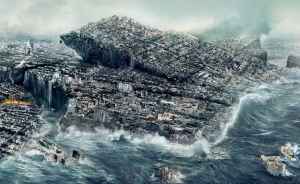
Risking property and life to get a uncommon scene isn’t considered commercial, is unpredictable, and often isn’t easy or even possible to materialize. Animation comes to the rescue. This proves the flexibility animation provides.
Animated works have motion and brilliance that together achieve the magic and make the entire work fully adaptive to the demands of the story thanks to this malleability and ease of exaggeration.
This power to adapt to the story is the most important part of an animated work that decides the level of emotional attachment it’ll provide, and it is the reason an animated film makes you laugh, cry, applaud, or boo a character.
The Line of Separation
Although not very important, this idea is central to this discussion. Even with a good story, flawless characters, and music, an animated work cannot be very catchy and powerful enough to make the viewers remember it. In other words, the emotional attachment it provides isn’t a direct product of animation. It could be said that animation itself isn’t magic, given all the malleability it has.
In India, there’s a show about a duo who do all sorts of crazy stuff. The concept is very old. My father remembers reading their comics in childhood, so undoubtedly, the story would be good and enjoyable to still be remembered. Its TV version is fully computer animated.
However, now that I’ve seen countless animation films from various industries, played dreamy games, and witnessed the true potential of 21st century animation, the show is pathetically plain for me. Others might enjoy, but I can spot so many flaws that it feels so boring to even try watching.
So apparently, what brings in the magic of emotions? Or in other words, what is the line of separation between the good, emotionally strong animation work and the wannabe offspring of animation industry?
A simple rule of thumb is that the more experienced animators are deployed, the more emotionally strong it’ll be.
Films from Disney, Pixar, DreamWorks, Lucasfilm, etc. aren’t a single team’s project. All centers, home and abroad, work together and contribute essential parts. They constantly revise and update and are masters of modern software and skills of animation.
Given such a background, it can be safely assumed that any animation work from their house will be a blockbuster and record-breaking success. It will be stronger, both in emotions and the fun quotient, relative to live-action. That’s pretty much the reason behind popular animation studios taking so long to make their films, and those films always ending up being loved in plenty.
Concluding Notes
The strong bonding and realism of story are achieved by great hard work.
Interactive animated works, like games, show the power of animation to a higher degree. You can design a world of your own in Age of Empires or see the seamless coalesce of information with animation when you gun down opponents in Call of Duty.
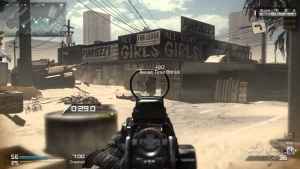
Notwithstanding that, animated films are special in their own right, even if quickly exhaustible (most are around 200 minutes) or rigidly non-customizable. They have the meat of our discussion: the emotions.
The beautiful merger of animation malleability and technological capabilities makes an animated work more fantastic and adventurous than a live-action counterpart.
All the aspects of a story can be, seemingly infinitely, exaggerated in animation. Until the limit is maintained between sane, natural action and insane action, such exaggeration of actions is still enjoyable. Let’s take a small example.
The rough and wild, frenzy human-chase scene of The Adventures of Tintin: The Secret of the Unicorn cannot be imagined in live-action. Quite impossible, but still lovable. We don’t care about physics here, as no absurd happenings are proposed, it’s merely an exaggeration.
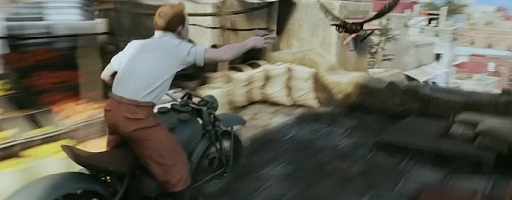
For chase, the best you can expect is Fast & Furious 6 car-chase against the jumbo jet. Now, although not very compatible, but a nice alternative to an animated counterpart to Fast & Furious 6 will be the car-chase scenes of, well, Cars.
In Cars 2, the entire piece from McQueen getting out of the Big Ben clock tower to the conclusion is an awe-inspiring scene. Although Cars 2 was more of a lighthearted fun film, unlike the utter seriousness of the late Paul Walker-starrer, so we cannot truly compare. But it showcases the exaggeration quite well. All of McQueen’s bodily flexibilities and turning distortions aside, no car in the world could run through other cars like that!
So, wrapping everything up, it could be said that animated works are mostly elegant and beautiful. Many integral parts of films, like physics-defying action or unreal creatures and structures, are provided by animation, and after the clean line of separation, all animation works are incorporated with the power to induce strong emotions into the audience. Thrill, adventure, sorrow, happiness, everything is enhanced because the work can be exaggerated by animation. And the jewel of animation is its ability to create funny situations, which are the main factor behind the popularity and acknowledgement of animated works.
What do you think? Leave a comment.
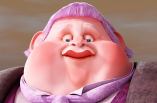
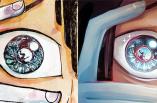


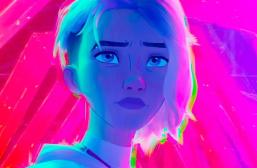
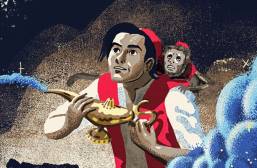
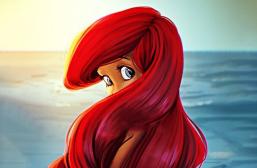
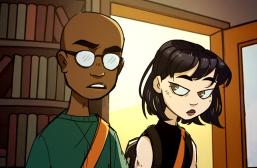
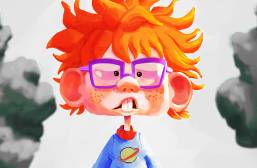
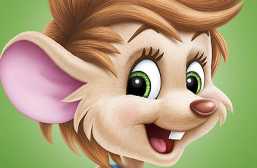

I totally agree that voice actors should be used in animated films more than live-action actors should. It’s not that the live-action actors are bad, their just distracting, and they take away jobs from real voice actors, that do this for a living. Really good article, and I like how much you covered about the animation industry.
My Sister had the movie Plague Dogs and I remember watching it when I was about 12 or 13? She never saw it thankfully but I cried my eyes out and my heart was broken. I dont know what happend to the videocassette but I hope its gone…
If I had to nominate mindfucked cartoons that evoke emotions, some episodes of the Animatrix would be on the list. Especially “The Second Renessaince pt 2”, and “Matriculated”.
I have recently watched an epic animated tale of two friends who are out to save their universe where laws of physics do not apply. from an evil dictator. To do so, they must travel to another universe, and almost die. The scene is which they are almost shriveled up by thirst is somoving it made me emoitonal. One of these aliens feel compassion for our heroes and because he is the strongest of his kind, he decides to take our wounded heroes home to save their planet: Spongbob Squarepants The Movie.
Grave of the fireflies made m cry at the first 3 minutes…
I just finished Grave of the fireflies. I’m a fan of Hayao Miyazaki’s work so i choosing what to be devastated by wasnt hard. My tears just dried up. My gosh this film made me weep for those two. The boy was so brave and she meant the world to him. I hope im not spoiling anything to u guys if i am, sorry.But yea, it made me quite sad. In the end i exploded with tears and misery. gosh. Accompanying music did not make it any better. just squeezed all my tears out. oh man. Thanx for reading
I recommend 5 centimeters per second, damn i really cried at the end.
Ano hana is way more sad. It burn my feels
In 6th garde my Japanese teacher made us watch Grave of the Fireflies. Of course in Japanese with English subtitles. Since English isn’t my first language either I didn’t understand the movie, but still cried my eyes out. It was very traumatising for a 12 year old.
I cried when *spoiler alert*… she finally died of starvation and tried to eat the toy marbles because she thought they were the candy she had before
Everyone should watch Felidae. It is dark as hell… it has scientists performing open brain surgury on a live cat, genetic mutations, weird dream scenes, prophecies, secret cults, violence, murder and, of course, cat sex. I still have no idea who was the intended audience. Suffice to say it was made in Germany.
Animation are the best movies to watch while depressed or going through a breakup.
and some people think animation is only for kids. they couldn’t be more wrong
I don’t understand why so many people WOULDN’T enjoy watching something that evoke emotions.
Back when I was teaching history, I had to deal with Japan’s role in WWII. I looked for something Hiroshima-related to show the class, and stumbled across Barefoot Gen. Thank heavens I previewed whether it was suitable to show to 11-year-olds or not…
I recommend Fantastic planet. It is an amazing movie to watch!
Fantastic Planet is awesome. If you’ve got a few drugs at hand, I assure you it will be even better. Watch it!
Frozen is the best animation I have watched in my life.
Great read!
I would highly reccomend boku no pico!
I remember watching watership down as a child, it fucked me up.
Awesome article. It’s interesting how much in animation literally couldn’t be accomplished live-action with the same emotional effect. The Pixar shorts are a great example of this, I think. So much emotion in such little time and often with no dialogue! Pretty amazing. 🙂
Pixar’s Toy Story 3 is a watershed for me. Thanks for this article.
Hey Abhumangu,
I really appreciate the topic of your article! It’s incredible how animation films can instill such strong emotions in views of all different ages. Many modern Pixar and Dreamworks films are actually geared towards adults as well as children, which cannot be said about classic Disney films.
You make many good points about the power of animation when you speak about the complex software used, the ability to defy physics without objection from the viewer, and the general malleability of the genre. All of these elements allow animation to transcend our imaginations in ways that live-action never could.
I do, however, find myself lost when you mention how emotion is not a direct result of animation because animation isn’t magic. In the first few paragraphs of your article you talk about the, for lack of a better term, magic that takes place when Elsa’s hair transforms before the viewer’s eyes and that is a great insight! It is the magic that animation achieves that pushes it past live-action and brings wonderment to the screen.
It is a similar point when we have main characters who are animals: The Fox and the Hound, The Lion King, Finding Nemo, Bambi, Ice Age. All of these films are magical because they allow animals to speak and communicate in a language we can understand. Some of them even talk to people (Family Guy). It is both funny (because who hasn’t voiced their own pet every now and again) and magical.
Another part that I want to touch on is when you applied your points on animation to live-action movies like Guardians of the Galaxy, Harry Potter and 2012 that incorporate animation in them. These movies are in a completely different genre known as hyper-realism. They cannot be compared to purely animated films.
Movies like Lord of the Rings and War of the Worlds are going to instill strong emotions because they hit closer to home. The audience can see themselves in the film (the actors) alongside animated characters (orcs and Gollum) and almost believe it is real. Likewise they can see the actual world collapsing in War of the Worlds and be completely terrified because it is based in world that the viewer can understand.
Overall, I was very enthralled while reading the article and think the topic is very relevant and vast.
Thanks for the post!!!
I feel the need to point out that hyperrealism only refers to the realistic detail. It’s just as capable of bending the rules of reality in extreme ways. It’s harder to believe in, say, a realistically detailed person with a giant head than a cartoony one because you’d expect them to tip over due to gravity. That being said, there’s still plenty of unrealistic things you can do in realistically detailed animation. You can play with size of objects and speed. You can change character’s bodily features and even work in backwards perspective if so inclined.
Even if my opinions on unrealistic realism don’t have you persuaded, I should also point out that live action films have used partially or wholly animated characters that speak in normal languages. There’s Babe, Stuart Little, and Paddington.
The Plague Dogs, just watched it…
Fascinating article. I was waiting for someone to write on the making of Pixar movies in details. You have done more: you have analysed why these films are so successful nowadays. Great!
The Iron Giant.
Nice article, when I watched Big Hero 6 I cried. It felt so real
you may want to check out Clannad and (more importantly) the second season Clannad After Story
I was really impressed with your section on voice acting, because I believe voice acting is a field that doesn’t have the respect it deserves. It’s too easy to put a celebrity voice as your lead role so that the audience lauds the performance simply because a name they recognize is doing the voice. Voice actors have to train themselves specifically to act with their voices and convey all of the emotion as a live-action actor from behind a microphone, which when combined with the animation will really make the character what it is. There are so many talented voice actors and actresses out there like Steven Blum, John DiMaggio, and Jennifer Hale and I’m really happy to see somebody discuss the art of voice acting.
The Iron Giant.audience lauds the performance
I think the voice acting is a huge part of what makes animation so emotional, so I’m glad you addressed it. Live action actors, while still doing a fantastic job of course, have to focus on their tone but also their facial expressions and body language. Voice actors have the ability to focus solely on their voice and how it suits the character, and are able to more easily project emotion into a scene. A character sounding like they’re about to cry will get me started every time.
Some very useful information! As a child I read a book explaining the technology behind the animation of the film, ROBOTS. I recall it explaining how emotion was projected from the characters faces and how voice actors had to hone on expressing those feelings clearly. Its amazing to see how far technology has come and how simple sketches can be rendered in 3D.
This works because it is a nice blend and fusion of the familiar and the exotic.